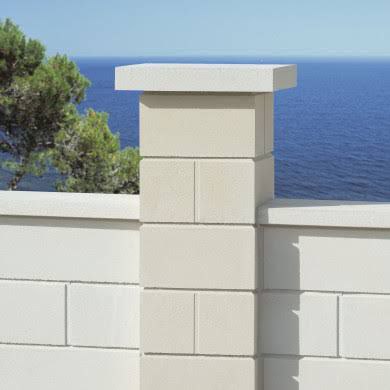Embarking on a construction project requires meticulous planning, and one crucial aspect is estimating the quantity of concrete blocks required. This guide will walk you through a step-by-step process to ensure accurate calculations for your construction needs.
Begin by understanding the specifications of your construction project. Identify the dimensions of the walls that will be built using concrete blocks. Take note of any variations in height, length, or corners as these factors will influence the number of blocks needed.
Concrete blocks come in various sizes and types. Standard block sizes are 8 inches by 8 inches by 16 inches, but variations exist. Consider the thickness of the mortar joints as well. Understanding the dimensions will aid in precise calculations.
Calculating the quantity of blocks needed for a building is a straightforward process. There are several methods for calculating number of blocks in a wall. In this article, I will explain two simple methods to find out total number of blocks for a wall.
| Method 1 | Surface area method |
| Method 2 | Volume method |
Method 1 – Surface area method
Required data
- Surface area of the wall
- Surface area of a standard concrete block
- Surface area of openings in the wall
Step 1:
- Determine The Length & Height Of The Wall
Let the Length of the wall = 10 feet.
The height of the wall = 10 feet.
Step 2:
- Calculate The Surface Area of The Wall
We know, Surface Area = Length x Height
∴ Surface area of the wall = 10 x 10 = 100 sq. feet.
Step 3:
- Calculate The Surface Area Of Openings
If the wall has any openings such as door, windows etc, calculate the surface area of
openings.
Let the wall has a window of 3′ x 3′
∴ Surface area of the window = 3 x 3 =9 sq. ft
Step 4:
- Subtract The Surface Area Of Openings From Surface Area Of Walls
∴ Final Surface Area of wall = 100 – 9 = 91 sq.ft
Step 5:
- Calculate The Surface Area Of A Concrete Block With Mortar Allowance
Let the block = 16″ x 8″ x 8″ and mortar allowance = 1″
∴ Surface Area of one block with mortar = length * height = (16+1) x (8+1)= 153
inch²
= 153/12×12 = 1.0625 sq.ft
Step 6:
- Divide The Total Surface Area Of The Wall By Surface Area Of One Block
∴ Number of blocks = Surface Area of wall/Surface Area of a block = 91/1.0625 = 86
Consider 5% wastage of concrete blocks.
So the total numbers of blocks required = 86 + (86 x 5/100) = 86 + 4 = 90.
Method 2 – Volume method
Required data
- Volume of the wall.
- Volume of a standard concrete block.
- Volume of openings in the wall
Step 1:
- Determine The Width, Height, And Thickness Of The Wall
Let the width of the wall = 10 feet.
The height of the wall = 10 feet.
The thickness of the wall = 8″ = 0.67 feet. [ Thickness of wall will be same as the thickness of one concrete block]
Step 2:
- Calculate The Volume Of The Wall
We know, Volume = Width x Height x Thickness
∴ Volume of the wall = 10 x 10 x 0.67 = 67 cubic feet
Step 3:
- Calculate The Volume Of Openings
If the wall has any openings such as door, windows etc, calculate the volume of
openings
Let the wall has a window of 3′ x 3′ x 0.67′ [ Thickness of the window will be same as
the thickness of the wall]
∴ Volume of the window = 3 x 3 x 0.67 =6 cu. ft
Step 4:
- Subtract The Volume Of Openings From Volume Of Walls
∴ Final volume of wall = 67 – 6 = 61 cu.ft
Step 5:
- Calculate The Volume Of A Concrete Block With Mortar Allowance
Let the block = 16″ x 8″ x 8″ and mortar allowance = 1″
∴ Volume of one block with mortar = (16+1) x (8+1) x 8 = 1224 inch3 [The mortal will be given on the upper side and one side of every concrete block] = 1224/12x12x12 = 0.70 cu.ft
Step 6:
- Divide The Total Volume Of The Wall By Volume Of One Block
∴ Number of blocks = Volume of wall/Volume of a block = 61/0.70 = 86
Consider 5% wastage of concrete blocks.
So the total numbers of blocks required = 86 + (86 x 5/100) = 86 + 4 = 90.
Note
While determining the number of blocks, don’t forget to account for mortar. Mortar is essential for securing the blocks in place. Calculate the volume of mortar required and adjust your block count accordingly.
Conclusion:
Accurately determining the number of concrete blocks needed is crucial for a successful construction project. By following these steps, you can approach the task methodically, accounting for various factors that influence the block count. Remember, precision in your calculations will contribute to the efficiency and cost-effectiveness of your construction endeavor.

